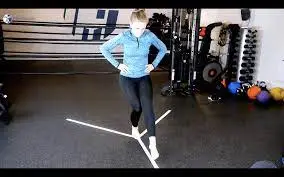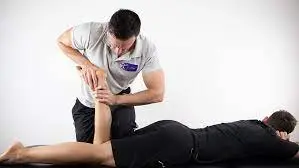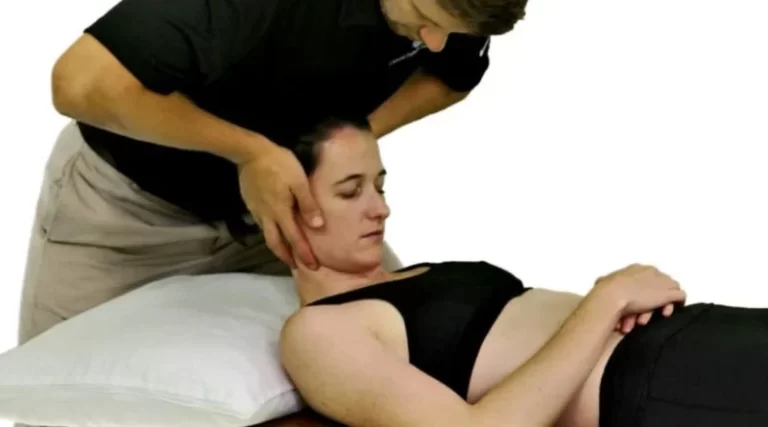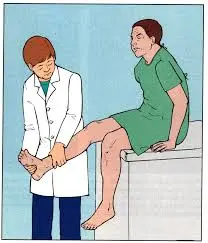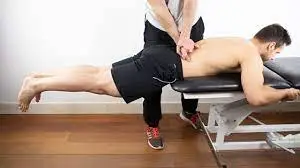Y Balance Test
Table of Contents
Introduction
The Y Balance Test is a functional assessment test used to measure an individual’s balance, strength, and neuromuscular control in sports medicine, physical therapy, and fitness. This exam has the purpose of evaluating the stability and coordination of the lower extremities, namely the legs and ankles. It is frequently used as part of a thorough evaluation to identify potential weaknesses or asymmetries in these areas.
During the Y Balance Test, an individual stands on one leg while reaching in three directions with the other leg, producing the shape of a “Y.” The test determines the greatest distance they can travel in each of these directions, providing important information about their dynamic balance and functional strength.
What is the Y Balance Test?
The Y Balance Test (YBT) is a simple yet reliable technique for measuring dynamic balance. It was created to standardize the modified Star Excursion Balance Test (mSEBT), increase its practicability, and commercialize it. Because of its simplicity and dependability, the YBT has grown in popularity since then.
The athlete must balance on one leg while reaching as far as possible with the other leg in three different directions: anterior, posterolateral, and posteromedial. As a result, this test assesses the athlete’s strength, stability, and balance in a variety of directions. The YBT composite score is obtained by adding the three reach directions and normalizing the findings to the lower limb length, whereas asymmetry is the difference between right and left limb reach – this is detailed further in the scoring method section.
While prior injury or surgery does not appear to affect test performance in collegiate athletes, the test has been demonstrated to have significant associations with knee flexor and hip abductor strength. Considering the fact that little study has been undertaken on the YBT and sports injury risk, most of the conclusions about injury risk are derived from studies on the SEBT due to its close resemblance to the YBT. An anterior reach asymmetry of more than 4cm during the Star Excursion Balance Test (SEBT), for example, has been suggested to indicate whether individuals are at risk of lower limb damage.
Other studies, on the other hand, found that only female athletes with a composite score of less than 94% of limb length were at a higher risk of injury. Athletes with a composite score of less than 90% are 3.5 times more likely to experience an injury, according to new research on NCAA American football players. Additional study has found a link between poor SEBT performance and persistent ankle instability. All of this data implies that each activity and demographic (for example, gender) appears to have its unique injury risk cut-off point.
Why should you use the Y Balance Test?
Balance, sometimes known as ‘postural control,’ is the capacity to maintain a stable stance while doing a job. In a hectic sports environment, the ability to keep a solid stance is critical not just for successful skill application but also for reducing the possibility of injury.
As a result, testing and monitoring an athlete’s dynamic stability may be of tremendous importance.
Purpose
The Y Balance Test is most commonly used to:
Assess Injury Risk: It is finding imbalances or deficiencies in the lower limbs, and it can assist in identifying persons at risk of lower extremity injuries such as ankle sprains or knee injuries.
Track Rehabilitation Progress: The Y Balance Test is frequently used by physical therapists as part of rehabilitation programs to track an individual’s progress in healing from injuries and increasing their balance and strength.
Improve Performance: Athletes and fitness admirers can use the test to detect areas of weakness or imbalance that may be affecting their athletic performance or training program.
Establish Baseline Data: Having baseline Y Balance Test scores can help you track changes in balance and lower limb function over time and plan focused therapies.
How do you do the Y Balance Test?
Equipment needed:
It is critical to have the following items before the exam begins:
The testing facility is consistent and efficient (minimum 22 meters).
Administrators of tests
A measuring tape and some sticky tape
Form for recording performance data.
Warm Up
Before beginning the test, participants should be completely warmed up. Warm-ups should correspond to the test’s biomechanical and physiological requirements. Furthermore, adequate recuperation (e.g., 3-5 minutes) should be provided following the warm-up and before the start of the test.
Procedure:
The athlete should remove their shoes and dress comfortably. They must then stand on the middle platform behind the red line, waiting for further instructions.
To do the test, follow the procedures below:
- Right Anterior
- Left Anterior
- Right Posteromedial
- Left Posteromedial
- Right Posterolateral
- Left Posterolateral
- The athlete should be instructed to slide the first box forward with their right foot as far as possible while maintaining their hands firmly on their hips, then return to the upright starting stance.
- Reach lengths should be measured to the closest 0.5 cm.
They should then repeat with the same foot, achieving three successful reaches in total. After successfully executing three reaches with their right foot, they are permitted to repeat this movement with their left foot.
After performing three successful reaches with each foot, the athlete can go to the next test direction (i.e., posteromedial).
The test taker should record the reach distance of each attempt in order to calculate the athlete’s YBT composite score.
The athlete cannot place a foot on the ground before returning to the starting position. Any loss of equilibrium will result in a failed attempt. Once in the starting position, players are permitted to place their foot behind the center/balance foot box.
Y Balance Test Scoring System
After the test is completed and all performances have been recorded, the test administrator can apply any or all of the three formulae below to calculate the athlete’s YBT performance scores.
Absolute reach distance in centimeters
(Reaching 1 + Reaching 2 + Reaching 3) / 3.
(%) relative reach distance (normalized)
absolute reach distance/limb length*100
(%) composite reach distance
3 times the length of the limb multiplied by the sum of the three reach directions
Reliability
The Y-Balance Test (YBT) showed very good levels of inter-rater test-retest reliability (ICC = 0.80-0.85) when evaluated by first-year PhD physical therapy students.
Another study’s findings, which showed that intrarater reliability ranged from 0.85 to 0.91 and interrater reliability ranged from 0.99 to 1.00, support this. The composite reach score had intrarater and interrater reliability of 0.91 and 0.99, respectively.
Resources
The “Move to Perform Algorithm” program predicts injury risk using the Y-Balance and the Functional Movement Screen (FMS).
The following components are used:
Previous ailment
Y-Balance test (YBT) composite score depending on gender, sport, and level of competition
Asymmetry in the Y-Balance Test
Total Functional Movement Screen (FMS) score
Asymmetry on the Functional Movement Screen Pain with testing
Based on the technique, patients are classified as normal, slightly increased risk, considerably increased risk, or significantly increased risk.
Summary
The Y Balance Test was created to improve the long Star Excursion Balance Test (SEBT) method. As a result, the majority of the data supporting the Y Balance Test is based on Star Excursion Balance Test investigations. The Y Balance Test, on the other hand, has been demonstrated to be a sensitive indicator of injury risk in athletes, as well as having a high level of test-retest reliability.
FAQ
The Y Balance Test (YBT) is a measure used to assess an individual’s risk of injury. It is suitable for both the upper and lower quarters. The lower quarter YBT (LQYBT) procedure has been carefully explored, as it is based on research done on the Star Excursion Balance Test.
The Y-Balance Test is a dynamic test that requires strength, flexibility, core control, and proprioception in a single-leg stance. It has been used to evaluate physical performance, establish functional symmetry, and identify athletes who are more likely to sustain a lower extremity injury.
Other illnesses that might induce balance issues include visual difficulties, heart disease, blood vessel abnormalities, migraine headaches, and arthritis. Balance tests assist in determining the source of balance issues so that you may receive the appropriate therapy to improve your balance and avoid falls.
The UQYBT sets a patient in a closed chain (Push Up) posture and assesses their ability to hold that position while reaching with one hand as far as possible in three test directions (Medial Reach, Inferolateral Reach, Superolateral Reach) throughout the motions.
The modified Star Excursion Balance Test (mSEBT) and the Y-Balance Test (YBT) are two commonly used procedures for assessing dynamic balance in clinical settings. When screening for lower extremity injury risk, clinicians frequently employ only one of these test techniques and one outcome factor.
Having good balance can help you avoid falls and injuries, and just make your everyday tasks simpler to complete. Keeping your equilibrium is a difficult effort that demands synchronization from your muscles, tendons, bones, eyes, ears, and brain.
Reference
- Y Balance Test. (n.d.). Physiopedia. https://www.physio-pedia.com/Y_Balance_Test
- Walker, O. (2023, September 1). Y Balance TestTM. Science for Sport. https://www.scienceforsport.com/y-balance-test/
- Lower Quarter Y-Balance Test. (2015, October 29). Shirley Ryan AbilityLab. https://www.sralab.org/rehabilitation-measures/lower-quarter-y-balance-test
- Bulow, A., Anderson, J. E., Leiter, J. R., MacDonald, P. B., & Peeler, J. (2019). WHEN ASSESSING PHYSICALLY ACTIVE HEALTHY ADOLESCENT FEMALES, THE RESULTS OF THE MODIFIED STAR EXCURSION BALANCE AND THE Y-BALANCE TEST DIFFER. International Journal of Sports Physical Therapy, 14(2), 192-203. https://www.ncbi.nlm.nih.gov/pmc/articles/PMC6449011/
- Alnahdi, A. H., Alderaa, A. A., Aldali, A. Z., & Alsobayel, H. (2015). Y Balance Test and lower extremity functional values
- scale in young healthy adults. Journal of Physical Therapy Science, 27(12), 3917-3921. https://doi.org/10.1589/jpts.27.3917
- Plisky, P. J., Schwartkopf-Phifer, K., Huebner, B., Garner, M. B., & Bullock, G. S. (2021, October 1). A Systematic Review and Meta-Analysis of the Lower Quarter of the Y-Balance Test: Reliability, Discriminant Validity, and Predictive Validity. The International Journal of Sports Physical Therapy. https://doi.org/10.26603/001c.27634
- Clinic, M. P. (2023, September 18). Y Balance Test. Mobile Physiotherapy Clinic. https://mobilephysiotherapyclinic.in/y-balance-test/
- Y Balance Test. (n.d.). https://www.topendsports.com/testing/tests/balance-y.htm

